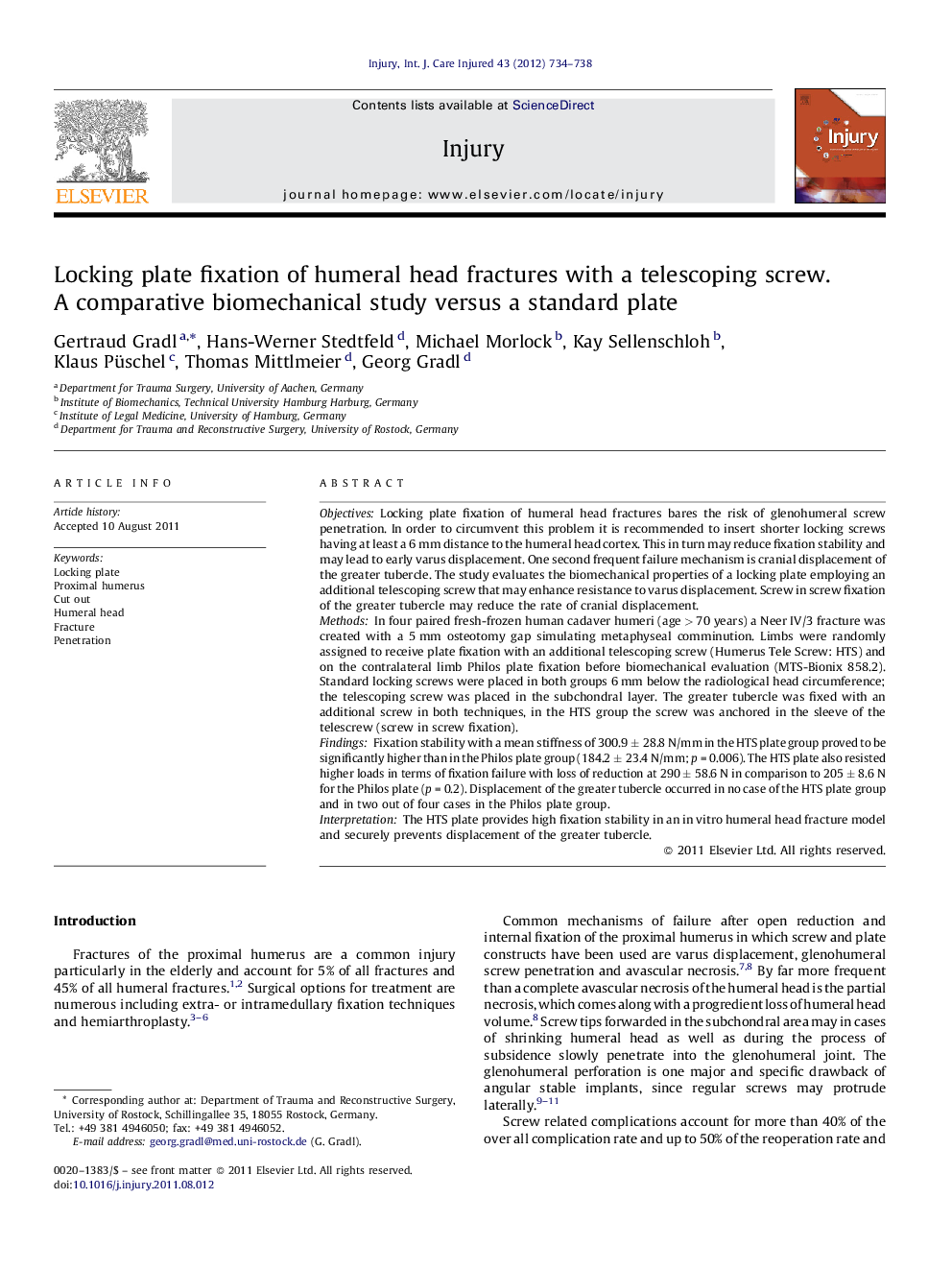| Article ID | Journal | Published Year | Pages | File Type |
|---|---|---|---|---|
| 3239642 | Injury | 2012 | 5 Pages |
ObjectivesLocking plate fixation of humeral head fractures bares the risk of glenohumeral screw penetration. In order to circumvent this problem it is recommended to insert shorter locking screws having at least a 6 mm distance to the humeral head cortex. This in turn may reduce fixation stability and may lead to early varus displacement. One second frequent failure mechanism is cranial displacement of the greater tubercle. The study evaluates the biomechanical properties of a locking plate employing an additional telescoping screw that may enhance resistance to varus displacement. Screw in screw fixation of the greater tubercle may reduce the rate of cranial displacement.MethodsIn four paired fresh-frozen human cadaver humeri (age > 70 years) a Neer IV/3 fracture was created with a 5 mm osteotomy gap simulating metaphyseal comminution. Limbs were randomly assigned to receive plate fixation with an additional telescoping screw (Humerus Tele Screw: HTS) and on the contralateral limb Philos plate fixation before biomechanical evaluation (MTS-Bionix 858.2). Standard locking screws were placed in both groups 6 mm below the radiological head circumference; the telescoping screw was placed in the subchondral layer. The greater tubercle was fixed with an additional screw in both techniques, in the HTS group the screw was anchored in the sleeve of the telescrew (screw in screw fixation).FindingsFixation stability with a mean stiffness of 300.9 ± 28.8 N/mm in the HTS plate group proved to be significantly higher than in the Philos plate group (184.2 ± 23.4 N/mm; p = 0.006). The HTS plate also resisted higher loads in terms of fixation failure with loss of reduction at 290 ± 58.6 N in comparison to 205 ± 8.6 N for the Philos plate (p = 0.2). Displacement of the greater tubercle occurred in no case of the HTS plate group and in two out of four cases in the Philos plate group.InterpretationThe HTS plate provides high fixation stability in an in vitro humeral head fracture model and securely prevents displacement of the greater tubercle.
